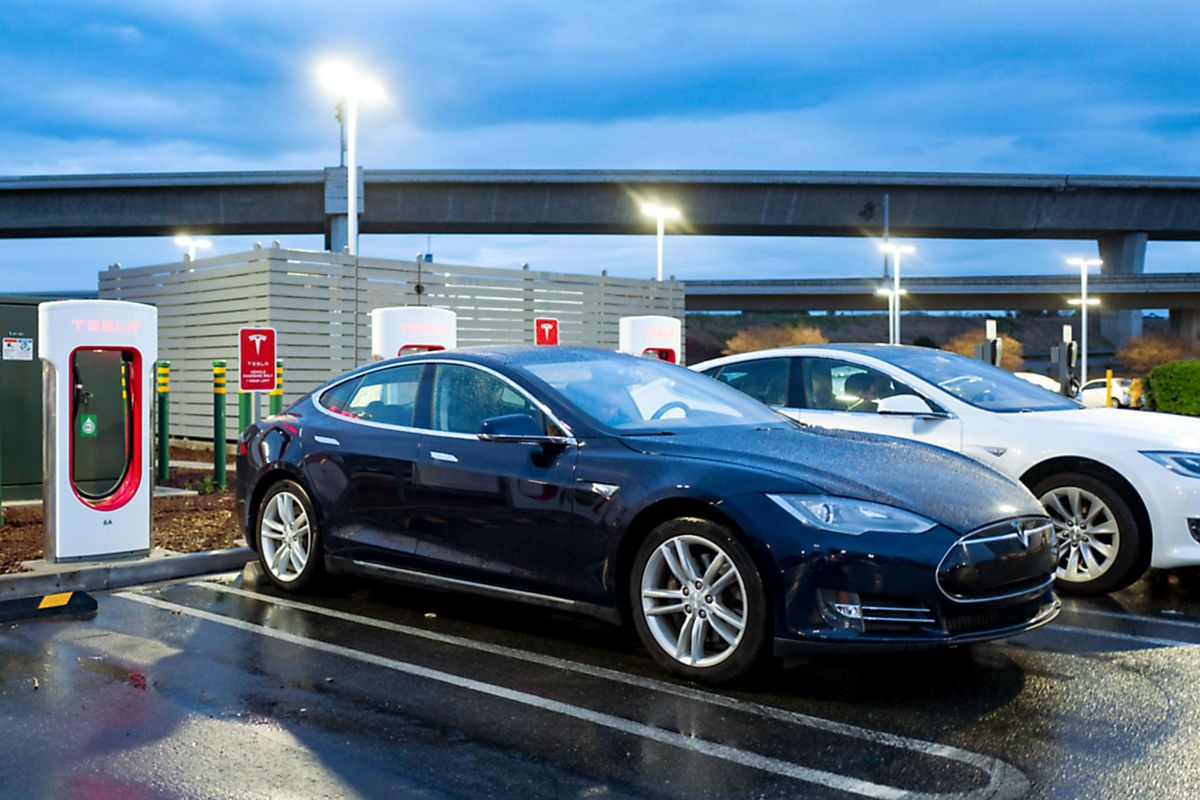Can Alt-Fuel Credits Accelerate EV Adoption?


The United States is household to the world’s premier biofuel software. For the past 10 years and a 50 %, the U.S. authorities has mandated that the country’s government-operated planes, trains, and cars run on a gas mix partly designed from corn- and soybean-primarily based biofuels.
It’s a software with decidedly mixed final results. Now, it could possibly get a breath of new daily life.
Previously this thirty day period, Reuters noted that the system could be expanded to give electrical power for charging electric autos. It would be the largest modify in the historical past of a program that has, in section, unsuccessful to stay up to its designers’ formidable goals.
In 1 way, the plan in question—the Renewable Gas Common (RFS)—is a relic from a bygone period. U.S. lawmakers recognized the RFS in 2005 and expanded it in 2007, nicely prior to photo voltaic panels, wind turbines, and electrical automobiles became the stalwarts of decarbonization they are today.
The RFS, in essence, mandated that the blend powering engines in the nation’s official service cars run on a selected amount of renewable fuel. Petroleum refiners have to put a specific sum of renewable fuel—such as ethanol derived from corn or cellulose—into the U.S. source. If a refiner could not control it, it could purchase credits, termed Renewable Identification Quantities (RINs), from a supplier that did.
From 2006, the RFS set a program of yearly obligations by way of 2022, with each year mounting RIN targets. The long-time period targets have been a lot more bold than the real sum of biofuel the U.S. at any time actually developed. (It did not assist that fossil fuel producers fought tooth and nail to minimize their obligations. In the meantime, agriculture-marketplace lobbyists fought just as tough in opposition to all those reductions.)
By the mid-2010s, the U.S. Environmental Safety Agency, which stewards the RFS, had repeatedly downsized the targets by approximately 25 percent. In 2016, a U.S. federal government report said, pretty bluntly, that “it is not likely that the plans of the RFS will be met as envisioned.” A much more modern examine identified that, due to the fact the program coaxed farmers into employing more land for corn cultivation, RFS biofuel wasn’t actually any a lot less carbon-intense than gasoline.
Now, it is 2022. Amidst a backdrop of increasing gasoline costs, the Biden administration could carry the RFS its biggest shakeup however.
The proposed improvements aren’t established in stone. The EPA is underneath orders to propose a 2023 mandate by 16 November. Any electric powered car or truck insert-on would most likely debut by then. Reuters formerly reported that the Biden administration has achieved out to electrical car or truck maker Tesla to collaborate on crafting the mandates.
The variations could possibly bolster the RFS with a new variety of credit score, an “e-RIN,” which would mark an amount of electricity used for charging electric cars. The modifications could nudge the RFS absent from corn and oil: Automobile-charging firms and power-plant biogas suppliers could possibly turn into suitable, also.
It would not be this administration’s initially endeavor at boosting electric powered motor vehicles. Although California qualified prospects state governments in slating a 2035 concentrate on for ending most interior combustion car or truck revenue, the federal government’s formidable Inflation Reduction Act allocated resources for tax credits on electric powered autos. That system, however, has confirmed contentious owing to an asterisk: A $7,500-for each-auto credit would use only to cars and trucks for which most battery content and factors arrive from North The us.
Several analysts think that the plan could essentially slow electric car or truck get-up somewhat than accelerate it. And though the prepare seeks to minimize U.S. electric powered-car or truck provide chains’ reliance on Chinese unusual earths and battery parts, U.S.-helpful governments in Europe, Japan, and South Korea have criticized the system for purportedly discriminating towards non-U.S. cars, possibly breaching Globe Trade Organisation principles.
Nunes claims it is at present unclear regardless of whether federal government motion by means of a gas regular would be extra helpful than immediate expense. It’s not the only issue with an solution that is however in flux.
“How a great deal cleaner are electric automobiles relative to inside combustion engines that are powered by fuels that fall beneath the RFS?” states Nunes. “Because that is really the comparison that you treatment about.”
What that implies is that any electrical automobile regular will only be as carbon-absolutely free as the source chains that go into earning the vehicles and the electrical grid from which they draw ability and that puts the strain on governments, electricity vendors, and buyers alike to decarbonize the grid.
Meanwhile, in a long run U.S. where by electrical automobiles occur to dominate the roadways, sidelining internal combustion engines and liquefied fuels for very good, do biofuels and the RFS’s primary purpose however have a spot?
Nunes thinks so. “There are surely locations of the economic climate exactly where electrification does not make a large amount of feeling,” he says.
In the earth of aviation, for occasion, battery tech hasn’t fairly sophisticated to a point that would make electric powered flights feasible. “That’s in which, I assume, employing factors like sustainable aviation fuels and biofuels, et cetera, can make a whole lot much more perception,” Nunes says.

-3.png?width=698&height=393&name=blog%20image%20Salima%20(1)-3.png)
